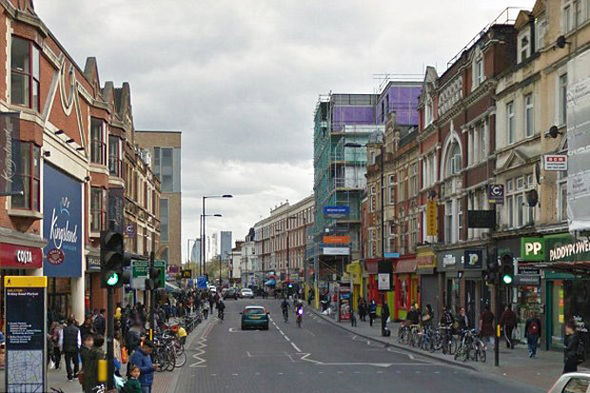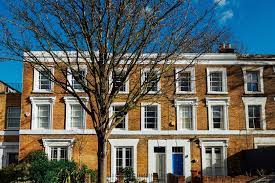
I just read in Time Out that Dalston has been ranked 13th in their annual list of the world’s coolest neighborhoods. Unlucky for some perhaps? I have a long history with this little pocket of north east London stretching back to the early nineties when it was pretty much a no go area. It’s an amazing transformation that this once grotty junction has made it this far (if you take these kind of lists seriously in the first place).
It was probably circa 1991 that I first ventured into Dalston to visit the infamous Labyrinth club, a seminal spot that emerged out of the London acid house scene as it went on to sub-mutate and morph into drum and bass and beyond. Labyrinth was a weekly night held at the Four Aces Club on Dalston Lane – now demolished to make way for luxury flats. Hackney and East London played a pivotal part in the emergence of jungle and drum and bass and Labyrinth was perhaps its nerve centre.

Indeed, previously The Four Aces club was a famous spot in the 60s catering to live music and, according to Wikipedia, Stevie Wonder, Bob Marley and Jimmy Cliff all played there. There is a film out there – ‘Legacy In The Dust: The Four Aces’ – that documents this story but I haven’t been able to find a copy. The club was a large rambling affair with numerous rooms – hence the name Labyrinth – playing different styles of house music. When I first started raving there it was pre drum and bass so you would hear early breaks, Chicago house, techno, bleeps and New York garage, before it all started to speed up padded out with reggae baselines and scattering breakbeats. The Prodigy played their first live show there. It was a hard party spot. I always remember the desperate attempt to park as close to the club as possible – to avoid getting mugged on the way out in the early dawn exit, probably an easy target with eyes still rolling and jaws gurning. Or not remembering where you parked you car, after retuning from a night that had seemed like it lasted a lifetime. Those epic early 90s nights seemed to last forever.
Legacy In The Dust: The Four Aces Story TRAILER from Winstan Whitter Filmmaker on Vimeo.
I also have a memory of going to a night at the Ashwin Studios on Ashwin Street the other side of the junction. From memory Jumping Jack Frost and DJ Hype were on the turntables. The track that always reminds me of that night is The Scientist’s ‘The Bee’, a seminal bottom heavy tune that joins the dots between house music and jungle. I also remember on the night perhaps being the only white person in the club – it was quite a heavy, urban atmosphere that all added to the vibe.
Flash forward to 1997, I was in my mid-twenties and had just graduated from a post-grad journalism course at City University and needed a place to live. With two other friends we did the rounds of flat hunting and wanted to be in North London, preferably Islington. We traipsed around various neighborhoods and ended up at number 4 Buckingham Street, N1. It had the N1 Islington post code but was technically in the borough of Hackney and Dalston – hence making it more affordable. It was a large Georgian house with three floors, including a large basement kitchen that was painted orange. I remember many a night in the kitchen listening to all the angsty pre-millennial music of the day like Radiohead’s ‘OK Computer’ and Massive Attack’s ‘Mezzanine’ soundtracking many a drunken night.

Back then Dalston was still pretty rough, gritty and urban. One morning I had a knife pulled on me whilst waiting for a bus to take me to work. I bartered with the crack head and gave him a twenty, enough I imagine for his next hit of rock. Another time I left my bike outside the house for a second to emerge seeing a youth scampering off down the road on it. I chased but to no avail. A women was murdered just down the road one night. Another day we looked out the door to see the road cordoned off and police marksman on neighboring roofs about to start a high value drugs bust. This makes it sound all like a nightmare – in fact for me the opposite was true. I really look back on these times with fond memories, in my mid twenties, a fairly well paid journalism job (an online editor at News International, yes Rupert Murdochs outfit) and generally less worries and responsibilities in life. They were my salad days – ‘Agh, youth is wasted on the young’. The slightly sketchy urban vibe added texture to the cosmopolitan experience, a kind of pre-hipster hipsterism. Plus, my body processed alcohol better, acute hangovers would pass quickly and nights without sleep due to partying didn’t take much to recover from. Those were the days.

My fond memories of the neighbourhood include drinking at the – now no longer there – Trolley Stop pub which was right opposite my house. It was quite a bohemian hangout and had a large room at the back where bands – mainly frustrated middle aged men banging out below par blues standards – would play. After a handful of Red Stripes it all sounded good. Even the harmonica solos in B flat. In the wider world, Britpop was all over the charts. UK garage rang out from the pirate radio stations from local estates and tower blocks. Drum and bass had got really good and by then itself had mutated into sub genres, a multi-headed beast that included tech, intelligent, jungle and liquid drum and bass. Radiohead were well on course to be the best band in the world. It was Cool Britannia all round. 911 hadn’t happened and we weren’t addicted to cell phones that arranged and overtook our lives. The pre-social media days. Those halcyon times of living in the moment, not pointing cameraphones at everyone and everything and obsessing over likes. Our brick sized phones were strictly for talking and not conditioning us to think there was always something better going on somewhere else and that people we didn’t know lived more exciting lives than us.

Dalston is very well located and central. It is just under two miles south of the City of London, the financial hub of the capital. You could take a number 38 bus from Balls Pond Road and be in the West End in 25 minutes. Just south was the amazing De Beauvoir neighborhood which had classy housing stock in the Jacobean style with tall gables and wide streets making it very sought after and expensive to live in. From Dalston you could walk into Islington quickly, heading west to hit Essex Road and Upper Street and Angel, favorite stomping grounds of mine back in the day.
For food shopping I would walk up Kingsland Road to the Sainsburys in the Mall. Next door to it was Ridley Road market – one of London’s famous street markets. It was a classic London hodge podge of culture, sounds, tastes and ethnicities mashing together Jamaican patties, Jewish bagels, okra, African headdresses, Arsenal shirts, exotic fruits I don’t know the name of or dried chicken feet (perhaps for a dish or maybe a spot of Voodoo activity.) Coarsing through it all would be the old school cockney vibe, after all we were essentially in East London. Barrow boys would call out their market wares – ‘come and got your tommys / bananas / carrots, 40 pence a pound, come on love…cheer up treacle it might never happen..’ – from the stall to grab some passing trade. Afterwards they would eat their profits at Menzies, an original pie and mash shop on the Kingsland Road – a long standing London delicacy – that I believe still stands to this day (although probably selling a tofu version for hipster demographic). Again, it was all classic London – everything different thrown together, a bit of a chaotic mess that somehow melded together and worked. Order out of chaos.

Hipster – a word long thrown around, misunderstood, overused and mentioned sometimes disparagingly, particularly in relation to recently gentrified neighbourhoods in big cities. It’s like the modern version of the 80s yuppie. Trendy youngsters move in, older residents move out unable to afford the rent or cashing in if they are lucky enough to own property. Often this can cause tension between the original inhabitants and the newcomers. In the past twenty years swathes of East London have changed beyond recognition. Areas you used to avoid are now highly desirable, helped by a lot of good housing stock throughout E8. It started in the late 90s with Shoreditch and Old Street and spread outwards. Then of course the 2012 London Olympics really put East London on the map with the Olympic Park and Village being located in Stratford. All of Hackney and environs – Hoxton, Hommerton, London Fields, Clapton, Mile End, Bethnal Green and of course Dalston, benefited immensely. I remember going to a rave in Homerton in the early 90s and it really was rough – now you can’t buy a two bedroom flat for under half a million.

To this day I often visit Dalston as a homage to memory lane. I walk the streets and think of past adventures and experiences. Much has changed. On the last visit I even saw a Marks and Spencers had opened near the station – now renovated and part of the newish North London Line – a sure sign that Dalston had arrived. Despite the organic delis, independent coffee shops and trendy bars it still retains that grotty, transitory urban flavor. Mobile phone repair shops, Turkish grocery stores, betting shops, 99 pence stores, cheap fried chicken restaurants, kebab houses and a McDonalds. There’s something for everyone – if you can still afford it.
Leave a comment